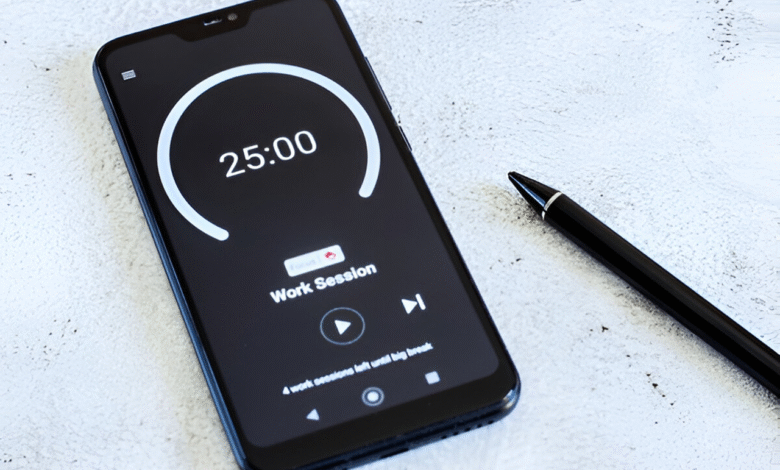How to Master Time Management Using the Pomodoro Technique
Master time management with the Pomodoro Technique 25-minute focused work + short breaks to boost productivity and crush procrastination.

Time management is the cornerstone of productivity in our fast-paced world, and the Pomodoro Technique stands out as one of the most effective methods to master it. Developed by Francesco Cirillo in the late 1980s, this technique breaks work into 25-minute focused intervals (Pomodoros) followed by short breaks. By structuring work in these manageable chunks, you can minimize distractions, maintain mental clarity, and accomplish tasks more efficiently than with traditional long work sessions.
Whether you’re a student struggling with deadlines, a professional juggling multiple projects, or an entrepreneur building a business, the Pomodoro Technique can transform your productivity. This guide will walk you through how to implement it effectively, its key benefits, and expert tips to maximize your focus. By the end, you’ll have a proven strategy to work smarter not harder while reducing burnout and improving work-life balance.
How to Master Time Management Using the Pomodoro Technique
What Is the Pomodoro Technique?
Why the Pomodoro Technique Works
Scientific studies suggest that the human brain can only maintain high focus for about 20-30 minutes before needing a reset. The Pomodoro Technique capitalizes on this by structuring work in digestible chunks, reducing fatigue. Additionally, frequent breaks prevent decision fatigue and keep motivation levels high. Another reason for its effectiveness is accountability. By committing to a 25-minute session, individuals are less likely to procrastinate. The ticking timer creates a sense of urgency, discouraging distractions like social media or multitasking.
Step-by-Step Guide to Using the Pomodoro Technique
Choose a Task
Begin by selecting a specific task to focus on. Whether it’s writing a report, studying, or coding, clarity is key. Avoid vague goals like “work on project” instead, define actionable steps like “draft the first section.”
Set a Timer for 25 Minutes
Use a Time Management(physical or digital) to mark the Pomodoro session. During this period, work without interruptions. If distractions arise, jot them down and return to them later.
Work Until the Timer Rings
Stay committed until the 25 minutes are up. Resist the urge to check emails or messages. If you finish early, review or refine your work rather than starting something new.
Take a 5-Minute Break
Once the timer goes off, step away from your desk. Stretch, hydrate, or rest your eyes. Avoid screen-related activities to give your brain a true reset.
Repeat the Cycle
After four Pomodoros, take a longer break (15-30 minutes). This helps recharge your mind and maintain sustained productivity throughout the day.
Benefits of the Pomodoro Technique
Enhanced Focus
By working in short intervals, you train your brain to concentrate deeply, minimizing mental clutter. This leads to higher-quality output in less time.
Reduced Procrastination
The Time Management constraint of 25 minutes makes tasks feel less daunting. Instead of delaying work, you’re more likely to start immediately.
Better Work-Life Balance
Regular breaks prevent burnout, ensuring you remain productive without sacrificing Mental health. Over time, this leads to a more sustainable work rhythm.
Improved Time Management Awareness
Tracking Pomodoros helps you estimate how long tasks take, improving future planning and scheduling.
Common Challenges and Solutions
Interruptions
If someone interrupts, politely ask to discuss later or note it down. Preserve your Pomodoro session for uninterrupted work.
Overworking
Some people skip breaks, thinking they’ll get more done. However, breaks are essential for long-term efficiency. Stick to the schedule.
Task Spillover
If a task takes more than four Pomodoros, break it into smaller subtasks. This ensures steady progress without frustration.
Tools to Enhance Your Pomodoro Experience
Smart Timer Applications
The foundation of effective Pomodoro work sessions begins with reliable timing tools. Dedicated apps like Focus Keeper and PomoDone offer more than just basic timers they provide session analytics, progress tracking, and customizable interval settings. These applications help maintain rhythm in your work sessions while offering insights into your productivity patterns over Time Management. For those preferring minimalist solutions, simple web-based timers like TomatoTimer provide no-frills functionality that keeps the focus strictly on your work intervals.
Digital Focus Guardians
In our distraction-filled digital world, tools like Freedom and Cold Turkey serve as essential focus protectors. These applications allow you to block distracting websites and apps across all your devices simultaneously, creating a forced focus environment during each Pomodoro session. More innovative solutions like Forest add a gamification element, where staying focused grows virtual trees that can translate into real-world tree planting through their partnership with environmental organizations. These tools effectively remove the need for constant willpower to resist digital temptations.
Integrated Task Management Systems
For maximum workflow efficiency, Pomodoro tools that integrate with task managers create a seamless productivity pipeline. Applications like TickTick and Todoist now incorporate built-in Pomodoro timers that link directly to your task lists, allowing you to Time Management specific to-dos into focused work sessions. Notion users can leverage customizable Pomodoro templates that combine task tracking with Time Management in a unified workspace. These integrated solutions eliminate the friction between planning and execution, making it easier to maintain consistent Pomodoro practice.
Focus-Enhancing Audio Tools
The right auditory environment can significantly boost Pomodoro effectiveness. Services like Brain.fm and Focus@Will provide scientifically-designed background music that enhances concentration during work intervals. These platforms offer soundscapes engineered to promote sustained attention while minimizing mental fatigue. For those who prefer natural sounds, Noisli allows customization of ambient noise mixes tailored to different work requirements, helping create an optimal audio backdrop for each Pomodoro session.
Physical Productivity Aids
While digital tools dominate modern workflows, physical Pomodoro aids still offer unique benefits. The Time Timer device provides a visual representation of Time Management elapsing with its disappearing red disk, making Time Management more intuitive. Analog solutions like Pomodoro Technique planners combine the tactile experience of pen-and-paper tracking with the structured interval approach. Even simple kitchen timers can serve as effective, low-tech Pomodoro tools that minimize digital distractions while keeping you on schedule.
Analytics and Progress Tracking
For those who want to measure and improve their Pomodoro practice, Time Management platforms like Toggl Track and RescueTime offer powerful analytics. These tools automatically record your work sessions, categorize your activities, and provide detailed reports on how you Time Management. By reviewing these insights, you can identify productivity patterns, optimize your schedule, and make data-driven adjustments to your Pomodoro routine for continuous improvement.
Read More: How to File Business Taxes Without a CPA
Conclusion
Time management becomes effortless when you implement the Pomodoro Technique consistently. By breaking work into focused intervals and strategic breaks, you’ll maintain peak productivity without burnout. This method not only sharpens your concentration but also helps you develop a realistic understanding of how long tasks truly take, allowing for better planning and reduced procrastination.
The beauty of the Pomodoro Technique lies in its simplicity and adaptability. Whether you’re tackling complex projects or daily tasks, this approach ensures steady progress while preserving mental energy. Start applying it today, and you’ll quickly notice improvements in both your work output and overall well-being. Remember, mastering Time Management isn’t about working more it’s about working smarter, and the Pomodoro Technique gives you the perfect framework to do just that.
FAQs
How many Pomodoros should I do in a day?
Aim for 8-12 Pomodoros (4-6 hours of focused work) per day. Adjust based on task difficulty and personal stamina to avoid burnout while maintaining productivity.
Can I change the Pomodoro duration?
Yes, experiment with 50/10 or 90/20 intervals if 25 minutes feels too short. The key is finding a rhythm that matches your focus span and work style.
What if I finish a task before the timer ends?
Use the extra time to review, refine, or organize your work instead of jumping into a new task. This ensures quality and prevents rushed transitions.
Is the Pomodoro Technique good for creative work?
Absolutely! Writers, designers, and programmers benefit from structured focus sessions followed by breaks, which boost creativity and prevent mental fatigue.
How do I handle long meetings with Pomodoro?
For meetings, try modified Pomodoros (e.g., 45/15) to keep discussions efficient. Schedule breaks to maintain engagement and avoid decision fatigue.








One Comment